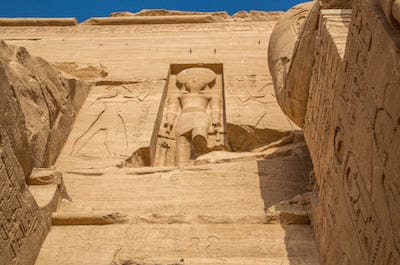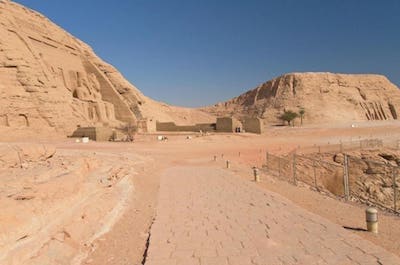No other nation in the world says ‘Welcome’ as often as the Egyptians, and every time, they mean it. While the ancient civilization of Egypt continues to amaze, contemporary Egyptians are equally remarkable.
The Temple of Dendera
Overview of the Temple of Dendera
The Temple of Dendera, a remarkable ancient Egyptian temple complex, is a treasure trove of historical, architectural, and cultural significance. Situated near Luxor, it provides an insightful glimpse into the religious practices and artistic achievements of the Greco-Roman period in Egypt.
Location and Mythological Significance
- Position: Located approximately 60 kilometers north of Luxor, on the West Bank of the Nile.
- Mythological Connection: Celebrated as the site where the goddess Hathor gave birth to Ihy, son of the falcon god Horus.
Architectural Design and Era
- Construction Period: Built during the Greco-Roman era, yet faithfully adhering to traditional Pharaonic architectural styles.
- Structural Layout: Comprises a sequence of hypostyle halls leading to a sanctuary, supplemented by various chapels and ancillary rooms.
Artistic Features
- Interior Design: Known for its dark sanctuaries and ceilings, creating a mystical ambiance.
- Artwork: The walls of the temple are adorned with exceptionally vivid and well-preserved colors and reliefs, showcasing religious scenes and deities.
Additional Highlights
- Birth Houses (Mammisi): Two beautifully decorated birth houses within the complex are noteworthy for their intricate and colorful wall decorations.
- Cultural Fusion: Reflects a blend of Greco-Roman and ancient Egyptian religious and architectural traditions.
Accessibility and Visitor Experience
- Tourism: Although less frequented compared to other temples in Luxor, Dendera offers a more serene and intimate exploration.
- Educational Insight: Ideal for those interested in Greco-Roman influences on Egyptian religious practices and the evolution of temple architecture.
Conclusion
The Temple of Dendera stands as a testament to the enduring legacy of Egyptian religious beliefs and artistic expressions, extending well into the Greco-Roman period. Its well-preserved artworks and unique architectural style make it a fascinating destination for history enthusiasts and travelers seeking to understand the depth and breadth of Egypt’s ancient heritage.
Abu Simble Travel Guide



